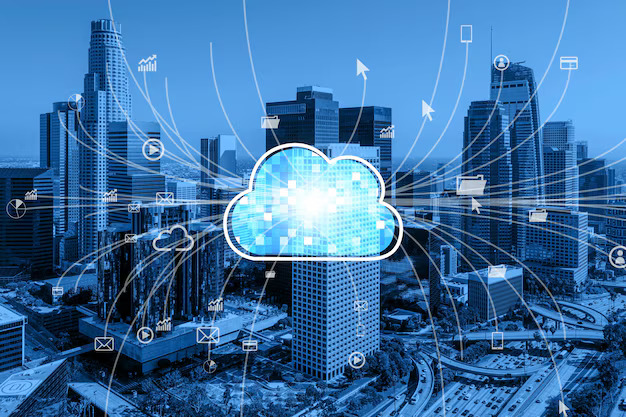Edge computing is a cutting-edge technology that is revolutionizing the way data is processed and managed in the digital age. By bringing computation and data storage closer to the source of data generation, edge computing offers numerous benefits such as reduced latency, improved data security, and increased efficiency. This article explores the fundamentals of edge computing, its key components, advantages, challenges, and future trends, providing insights into how this innovative approach is reshaping the landscape of modern computing.
# Introduction to Edge Computing
## Defining Edge Computing
Edge computing is like having a mini IT guru right at the edge of your network, handling tasks that would otherwise require long-distance communication with a central data center. It’s all about bringing data processing closer to where it’s needed, reducing latency, and boosting performance.
# Benefits and Advantages of Edge Computing
## Improved Latency and Performance
With edge computing, data doesn’t have to travel far and wide to reach its destination. This means quicker response times for applications and services, making things feel snappier and more responsive.
## Bandwidth Efficiency
By handling data processing closer to the source, edge computing helps reduce the strain on network bandwidth. This can lead to lower costs and better overall network performance.
## Enhanced Data Security and Privacy
Keeping sensitive information closer to home can enhance data security and privacy. With edge computing, data can be processed and stored locally, reducing the risks associated with transmitting data over long distances.
# Key Components and Architecture of Edge Computing
## Edge Devices
These are the frontline soldiers of edge computing, the gadgets and gizmos that collect and generate data. Think sensors, cameras, and other smart devices that kick off the data flow.
## Edge Computing Nodes
These are like the middle managers of the edge computing ecosystem, helping to process and analyze data closer to the edge devices. They act as the bridge between the edge devices and the central data center.
## Edge Computing Platforms
These are the command centers that oversee the whole edge computing operation. They manage and orchestrate data processing tasks across various edge nodes and devices, ensuring everything runs smoothly.
# Use Cases and Applications of Edge Computing
## Internet of Things (IoT)
Edge computing and IoT go together like peanut butter and jelly. By processing IoT data closer to where it’s generated, edge computing helps make IoT systems more efficient and responsive.
## Smart Cities
From traffic management to public safety, edge computing plays a vital role in making our cities smarter and more connected. By processing data locally, smart city applications can operate more effectively in real-time.
## Healthcare Industry
In healthcare, every second counts. Edge computing helps healthcare providers deliver faster and more personalized care by processing patient data closer to the point of care. This can lead to quicker diagnoses, better treatment outcomes, and improved patient experiences.# Challenges and Considerations in Implementing Edge Computing
## Interoperability Issues
Imagine trying to get a group of toddlers from different daycare centers to play together nicely – that’s interoperability issues in a nutshell. When it comes to edge computing, devices and systems from various manufacturers speak their own languages, making them about as compatible as cats and baths. Implementing edge computing successfully requires overcoming these interoperability hurdles to ensure seamless communication and cooperation between devices.
## Data Management and Governance
Data is the new gold, and managing it at the edge is akin to panning for gold in a fast-flowing river – challenging but rewarding. Edge computing generates a deluge of data that needs to be securely stored, processed, and accessed in real-time. Ensuring proper data governance practices are in place is crucial to protect privacy, maintain compliance, and prevent data breaches in this wild west of information.
# Future Trends and Developments in Edge Computing
## AI Integration
Artificial Intelligence (AI) and edge computing are the power couple of the tech world, like peanut butter and jelly but with more processing power. By integrating AI at the edge, devices can make autonomous decisions, adapt to changing environments, and learn from data on the fly. This fusion of AI and edge computing promises smarter, more efficient systems that can revolutionize industries from healthcare to manufacturing.
## 5G Connectivity
Move over snail mail, 5G connectivity is the Usain Bolt of communication technologies, bringing lightning-fast speeds and ultra-low latency to the edge computing party. With 5G, data can travel at warp speed between devices and the cloud, enabling real-time interactions and opening doors to innovative applications like autonomous vehicles and immersive virtual reality experiences. Embracing 5G connectivity is key to unlocking the full potential of edge computing in a hyper-connected world.
In conclusion, edge computing is poised to play a pivotal role in shaping the future of technology by enabling faster and more reliable data processing at the edge of networks. As organizations continue to embrace the potential of edge computing in addressing data-intensive requirements and enhancing user experiences, it is clear that this transformative technology will continue to evolve and drive innovation across various industries in the years to come.

